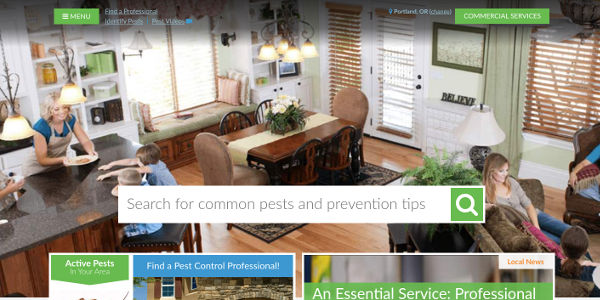Should your association website have content speaking to your member’s customers?
As an example, if you’re an association of landscape professionals, should you write articles on lawn management or have a big button, “Find a Landscape Professional?”
After all, if you could create leads for your members in the form of customers it would be a powerful benefit of membership. Additionally, it would cement your authority with members as the spokesperson of your industry. In some cases it may even help your members feel pride in your association if your website is a go-to source for consumers.
There are lots of good reasons to consider creating consumer facing content on your association website. All the positive aspects of this approach is what makes this endeavor a trap.
Why Trying to Serve Two Audiences is a Trap
At the most fundamental level, websites are just machines.
Well designed machines have a clear target user and target job.
The more focused the machine is on whatever job it’s designed to accomplish, the more effective it is.
As an example, sedans transport people, trucks haul things. When you lose that focus, you end up with an El Camino. While El Camino’s have their fans, there’s a reason why our highways aren’t filled with car/truck hybrids.
Your website is a machine that generates and serves members. That is its scope of responsibility. What is out of that scope pulls you into the El Camino trap.
You're trying to do two things and doing neither well.
Traffic Won’t Create Members or Leads for Members
Some executives or board members like the idea of getting search traffic from the general public. The idea is that you’re “generating awareness” for the organization, and- hey! That might lead to new members.
If you create good content, some portion of general consumers will find their way onto your website for things that happen to intersect with their interest. However, browsing an association website isn’t their goal and having them do so shouldn’t be yours.
When someone searches Google, they have some intent with their search. SEO’s unsurprisingly call this “searcher’s intent.” Google rewards websites that most effectively answer this intent with top rankings in the search results.
In our example of landscape professionals, if the association had a public article on landscape grading it might get some consumer visits from some hardcore DIY type consumers. However, their interest will drop off because the website isn’t targeted to them. It doesn’t really match their intent of “how does someone without professional tools grade a small lawn with clay soil.” A single article might provide some insight, but the rest of the site with legislative updates, industry news, and continuing education credits won’t speak to their goals. And DIY folks don’t hire landscapers.
How To Employ a Consumer Oriented Strategy
I’m not saying that you should never try and help connect your members with the people they serve. If you can do it, it’s a powerful benefit of membership and could be an effective strategy to serve your members and mission.
It is possible to connect members with consumers, just don’t make that effort part of your association website. Instead, build a new website that serves your member’s consumers with the goal of linking them to your members.
In other words, a separate machine with a separate user and goal.
If you wanted to help your landscaper members get customers, you would create a website that targets questions consumers would ask who were interested in hiring a landscaper:
- What are the top landscapers in x region?
- Are landscapers bonded?
- How much does lawn replacement cost?
- Where can I find a Japanese style landscaper?
- How much does it cost to install a timed sprinkler system?
An Example
As a real world example, the National Pest Management association serves members on their website and consumers on a separate website “Pestworld.” This is the effective approach to apply this strategy.

NPMA Serves Members

Pestworld Serves Consumers
Results Require Focus
There is a relationship between performance and focus. You see it on websites, you see it in associations, you see it in people’s lives. The old joke goes:
Q: How do you get to Carnegie Hall?
A: Practice.
In any endeavor it’s important to be clear about what the scope is and focus your efforts within that scope. For a member based organization like yours, the scope of your website is creating and serving members.

